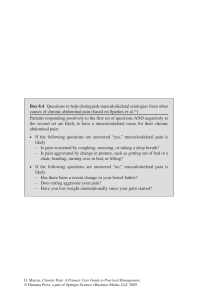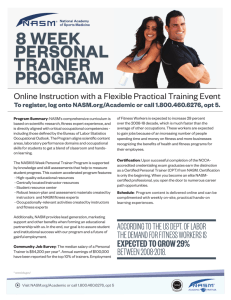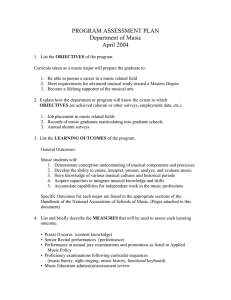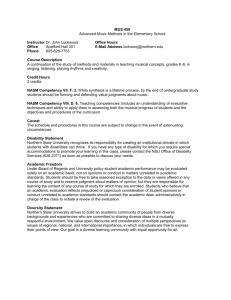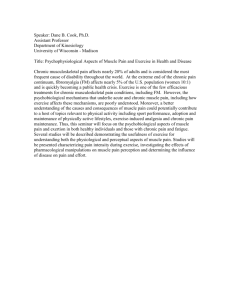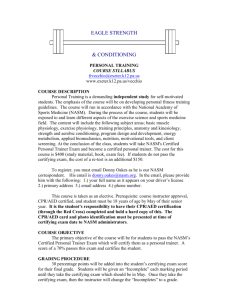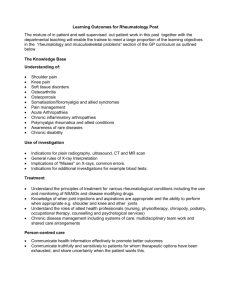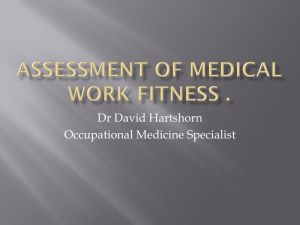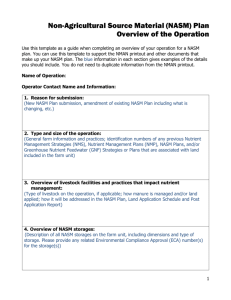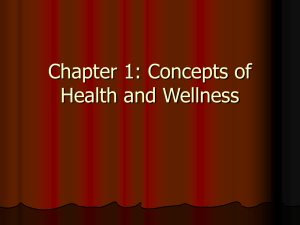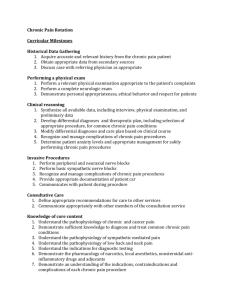Principles and Concepts of Human Movement Science
advertisement
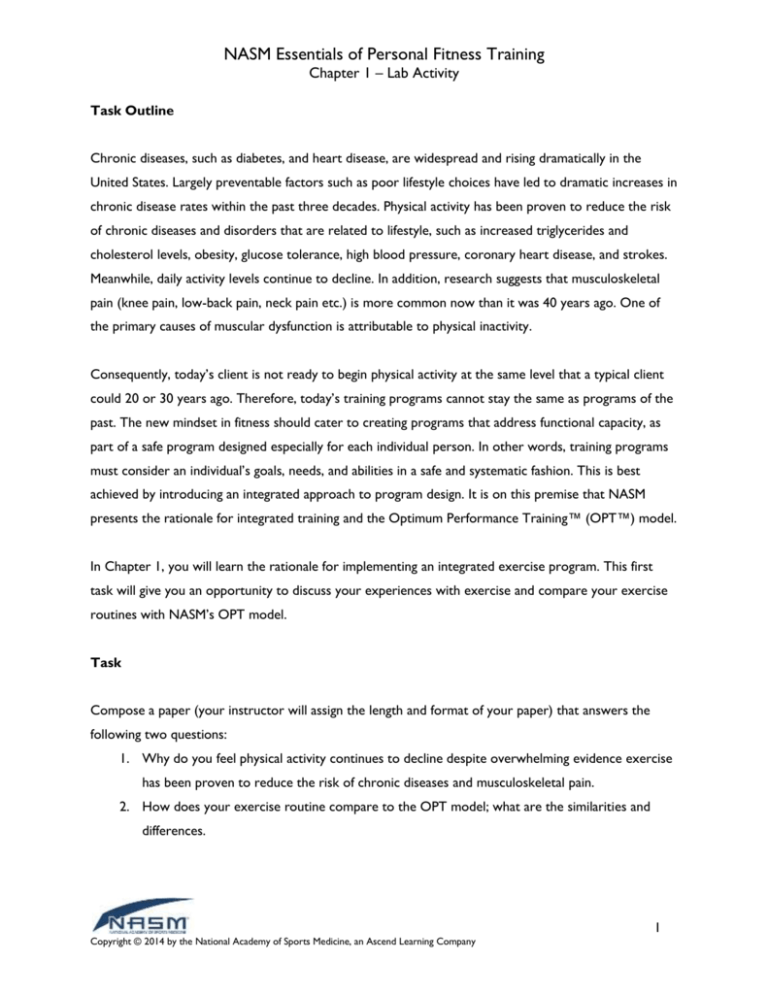
NASM Essentials of Personal Fitness Training Chapter 1 – Lab Activity Task Outline Chronic diseases, such as diabetes, and heart disease, are widespread and rising dramatically in the United States. Largely preventable factors such as poor lifestyle choices have led to dramatic increases in chronic disease rates within the past three decades. Physical activity has been proven to reduce the risk of chronic diseases and disorders that are related to lifestyle, such as increased triglycerides and cholesterol levels, obesity, glucose tolerance, high blood pressure, coronary heart disease, and strokes. Meanwhile, daily activity levels continue to decline. In addition, research suggests that musculoskeletal pain (knee pain, low-back pain, neck pain etc.) is more common now than it was 40 years ago. One of the primary causes of muscular dysfunction is attributable to physical inactivity. Consequently, today’s client is not ready to begin physical activity at the same level that a typical client could 20 or 30 years ago. Therefore, today’s training programs cannot stay the same as programs of the past. The new mindset in fitness should cater to creating programs that address functional capacity, as part of a safe program designed especially for each individual person. In other words, training programs must consider an individual’s goals, needs, and abilities in a safe and systematic fashion. This is best achieved by introducing an integrated approach to program design. It is on this premise that NASM presents the rationale for integrated training and the Optimum Performance Training™ (OPT™) model. In Chapter 1, you will learn the rationale for implementing an integrated exercise program. This first task will give you an opportunity to discuss your experiences with exercise and compare your exercise routines with NASM’s OPT model. Task Compose a paper (your instructor will assign the length and format of your paper) that answers the following two questions: 1. Why do you feel physical activity continues to decline despite overwhelming evidence exercise has been proven to reduce the risk of chronic diseases and musculoskeletal pain. 2. How does your exercise routine compare to the OPT model; what are the similarities and differences. 1 Copyright © 2014 by the National Academy of Sports Medicine, an Ascend Learning Company
